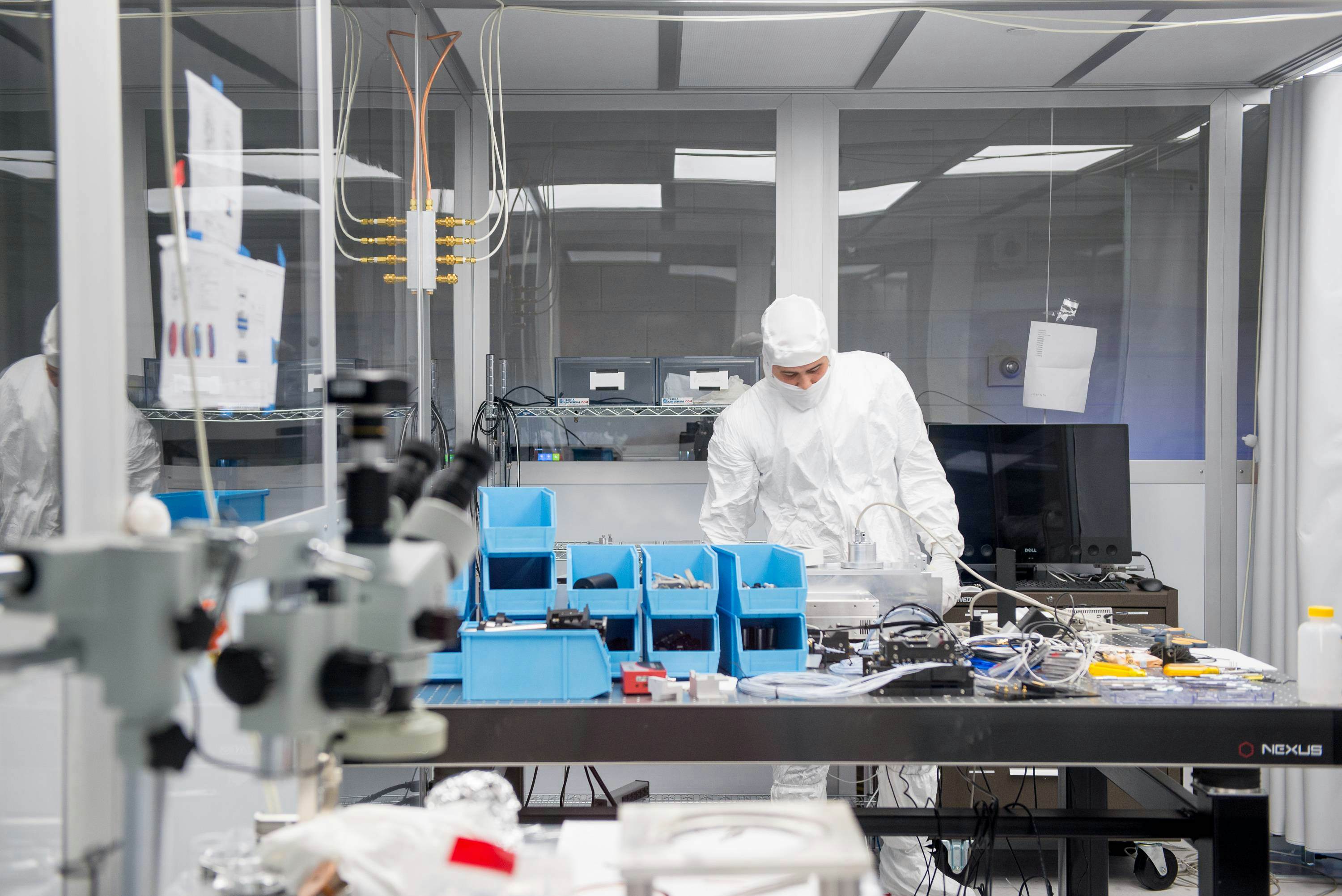
Not any time soon, but automakers and quantum companies are exploring it right now.

The batteries of the future will need to weigh less, charge faster, and last longer. Researchers today are testing new chemistries, but some hope the current process could be revolutionized by a technology still in its infancy: quantum computing.
Quantum computing uses the conventions of quantum mechanics to store data and perform calculations, potentially delivering massive advancements in processing power and the ability to solve certain problems in a fraction of the time it would take today’s supercomputers.
Although the technology remains far from its imagined potential, companies are already seeking to apply its computational powers to some big questions. Automakers are among that group—several have created partnerships in the last few years to apply quantum computing to battery chemistry research. Daimler is working with IBM, Toyota is working with QunaSys, and Hyundai is working with IonQ.
“One of the things about quantum computers that makes them quite unique is that they’re the best-suited tools in the world for solving quantum-mechanics problems,” Jake Taylor, chief science officer at quantum engineering company Riverlane, told Emerging Tech Brew. “What’s happening at the microscopic level in these batteries, there’s a lot of work in terms of catalysis—like how reactions are aided by other molecules nearby in their local environment. And that’s actually a really hard chemistry problem that involves quantum mechanics.”
Applying this tech to battery research is a promising early use-case, because it could improve the industry’s understanding of these complex chemical reactions and potentially lead to better, less-expensive batteries.
Quantum computers can accurately model molecular interactions in a way classical computers cannot, allowing researchers to simulate interactions between battery materials virtually, rather than in a physical lab. This would, in theory, allow chemists and materials scientists to work much more quickly and achieve results with higher accuracy and efficiency, helping push down the cost of batteries.
More Stories
ELECTRIC VEHICLESNorth American battery production got a boost in MarchTECHEmerging Tech Brew’s News Quiz: 4/11VENTURE CAPITALVC funding fell 13% in Q1 2022—the first drop in well over a year
Still, battery researchers say quantum computing doesn’t make sense in a commercial setting yet. It remains very niche and extremely expensive, so don’t expect it to play a significant role in battery research anytime soon, according to Nicholas Yiu, a battery scientist and co-founder of battery newsletter Intercalation Station.
Starting small
IonQ and Hyundai are developing a quantum-computer application that will allow them to model lithium oxide using IonQ’s existing technology. While lithium oxide is not directly used in EV batteries, modeling it could lead to useful insights about how batteries break down over time, and form a basis for more in-depth experiments in the years to come, according to Yiu.
“If we can more accurately model [lithium oxide], then you can find out the places where the energy is being lost,” Peter Chapman, president and CEO of IonQ told us, potentially leading to insights that could eventually create more efficient batteries.
The current project is focused on this relatively small and simple molecule—made up of two lithium atoms and one oxygen atom—but much of the work is about building algorithms that will be able to model the chemistry of much larger molecules in the future, Chapman said.
Stay up to date on emerging tech
Drones, automation, AI, and more. The technologies that will shape the future of business, all in one newsletter.Subscribe
“Generally, the investment in early chemistry scales well with the size of the molecule as it goes forward. It’s an investment in the actual chemistry software at this stage,” he added.
IonQ is a quantum-computing startup founded in 2015. Hyundai was an investor last year when the company went public via a $2 billion SPAC deal. IonQ shared its first full-year financial results at the end of March, reporting a net loss of $106 million in 2021.

For its part, Hyundai is one of the largest automakers in the world and is accelerating its EV efforts. The company announced in March that it aims to sell 1.87 million battery EVs per year by 2030, which would account for more than one-third of its total sales and capture about 7% of the global BEV market.
But replacing lab work with simulations won’t happen anytime soon, according to Taylor. It will require many significant advancements in quantum-computing hardware and software over the coming years.
“The addition of computer-aided discovery could be a game changer in terms of how you discover and then make better batteries. But to do it, you need a machine that can solve a certain quantum-mechanics problem,” he said. “No one in the world today has a computer that’s good enough for that.”
Chapman says quantum-computing capacity today is similar to where the classical computer industry was in the 1970s or 80s, in that developers have to be very smart and efficient when building applications to run on the current hardware.
Looking ahead, Chapman said IonQ and Hyundai hope to one day use quantum computing not only to determine incremental improvements to batteries, but to search for materials that could dramatically accelerate the technology.
“What you’d really like to do is say, ‘Well, we have a million compounds in a chemistry database,’ and now run some sort of application that goes through and does discovery. And you find some other compound that happens to be much better at being a battery,” he said.
While that may be far off, Chapman argues it’s necessary to invest in quantum if the industry ever hopes to harness computer-assisted discovery.
“With Moore’s Law—which is doubling [the number of transistors per silicon chip] every year for classical [computing]—even if you allow a million years to go by, you would not allow classical computers to model these chemistries,” he said. “So it isn’t the case that in 10 years, classical computers will get fast enough to model any of these really interesting chemistries.”































